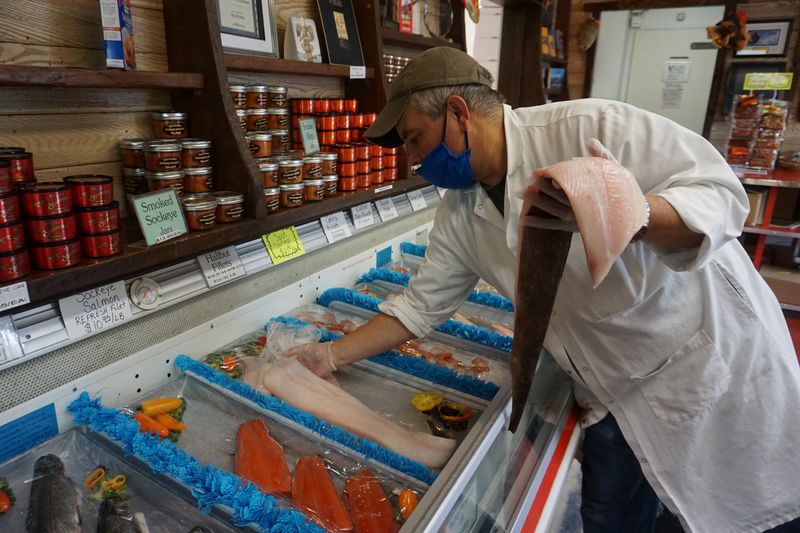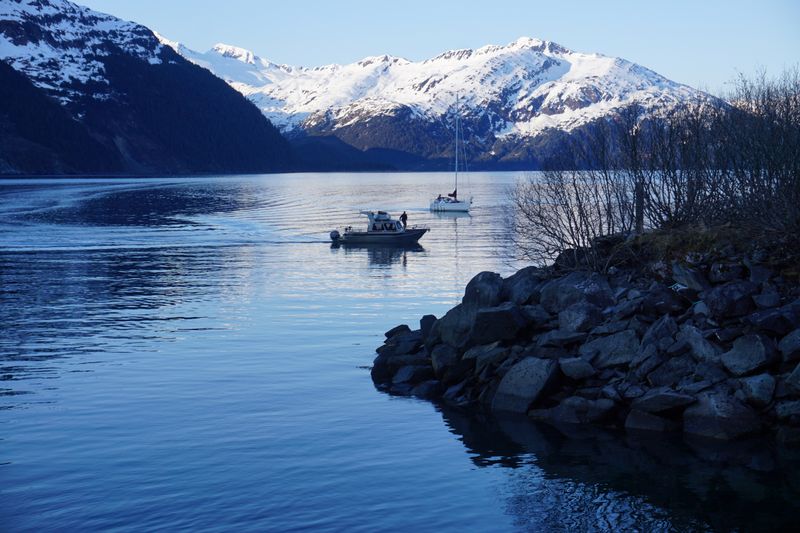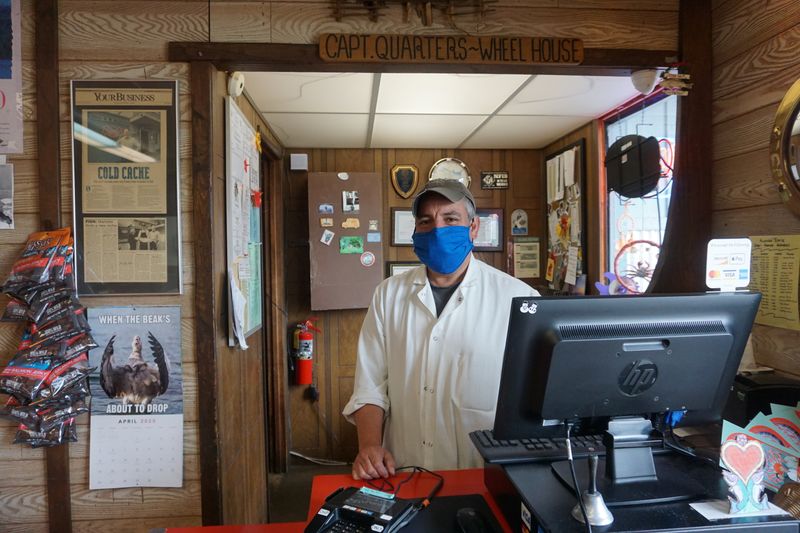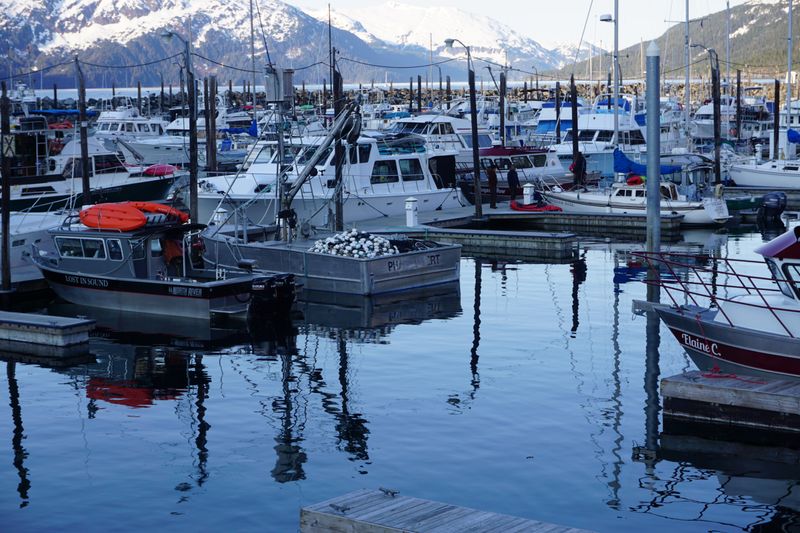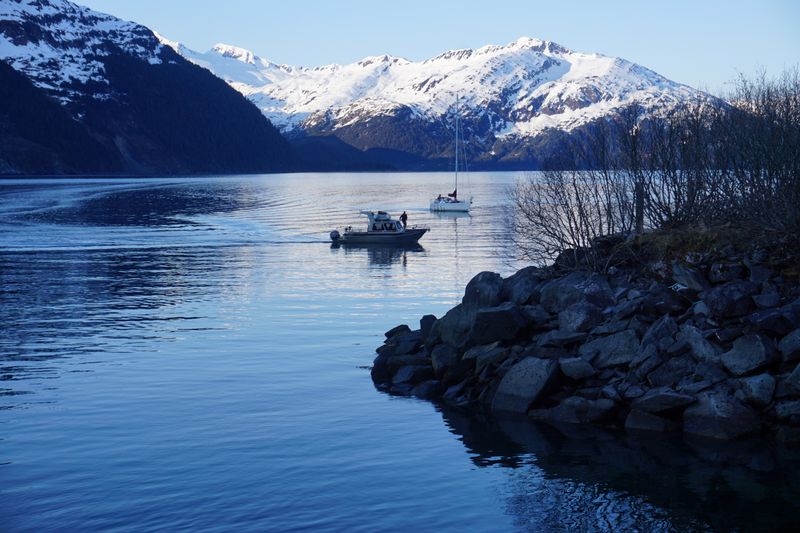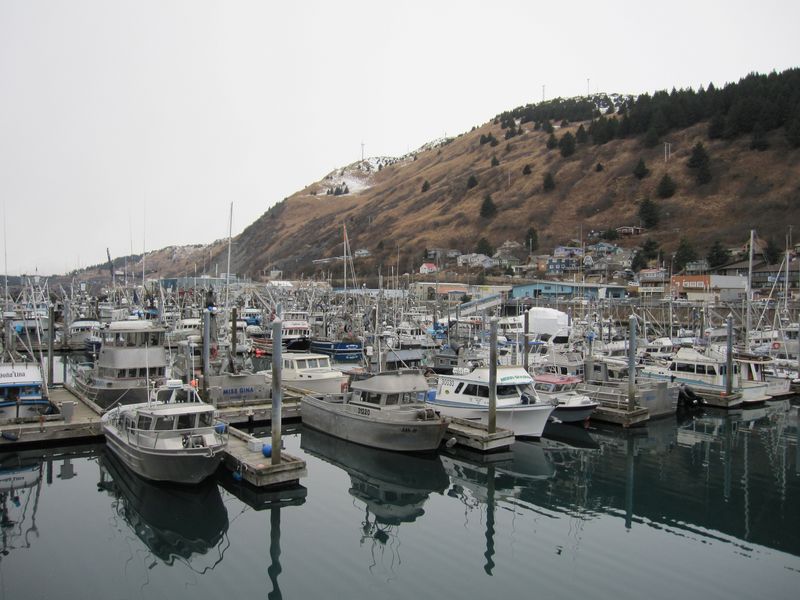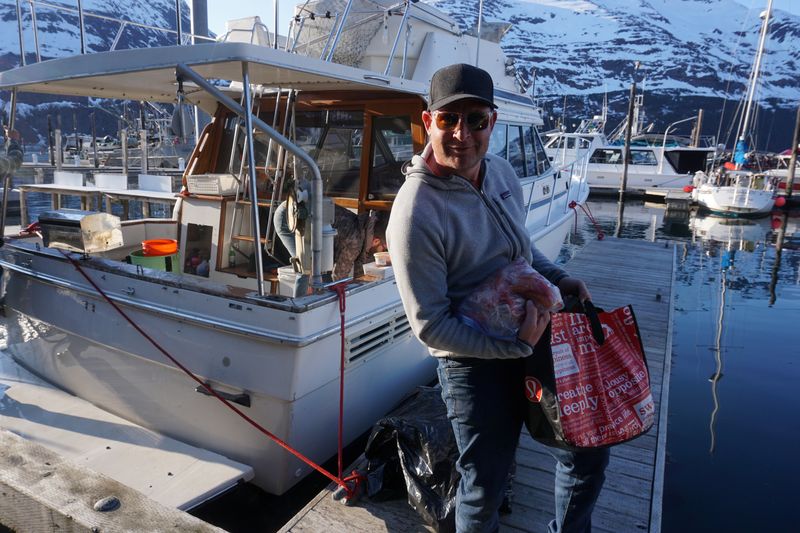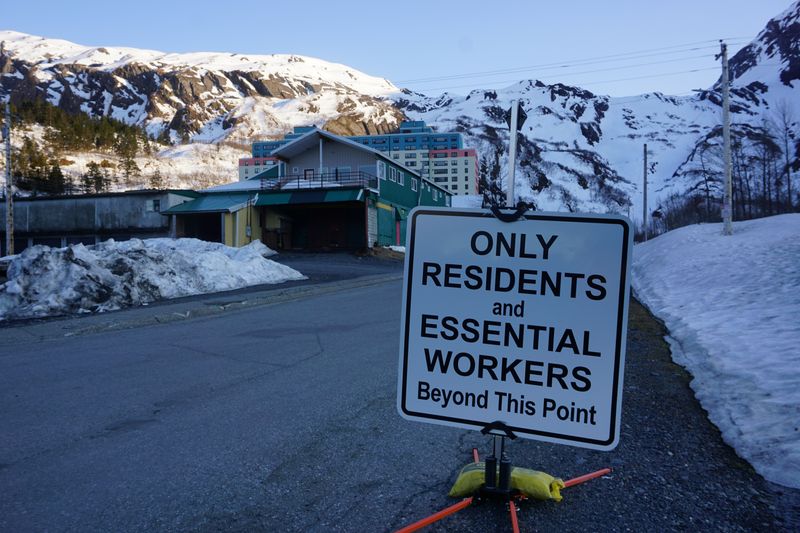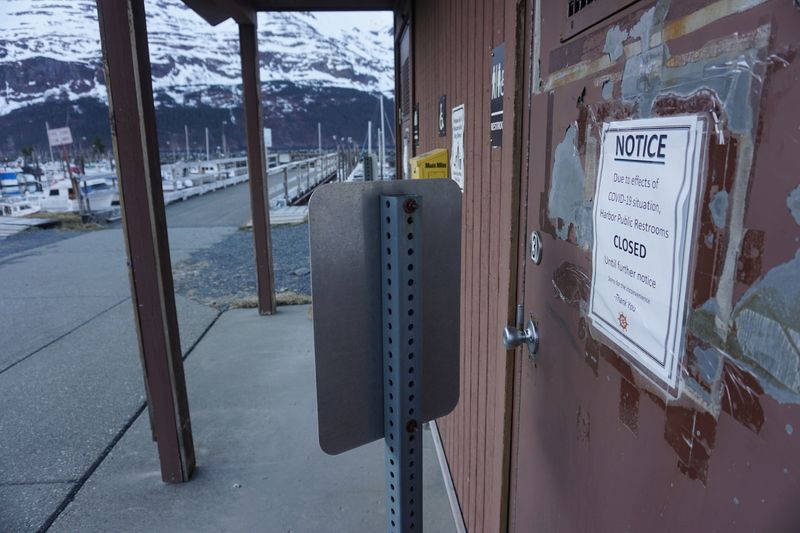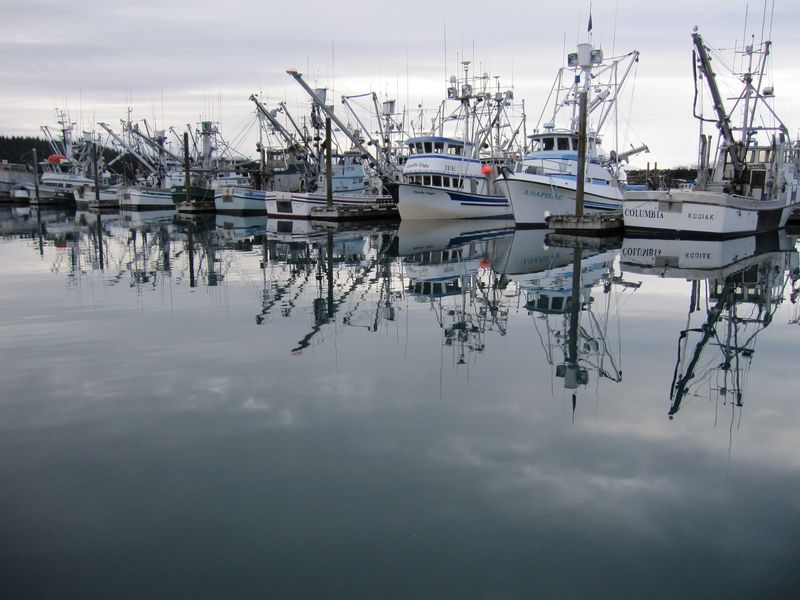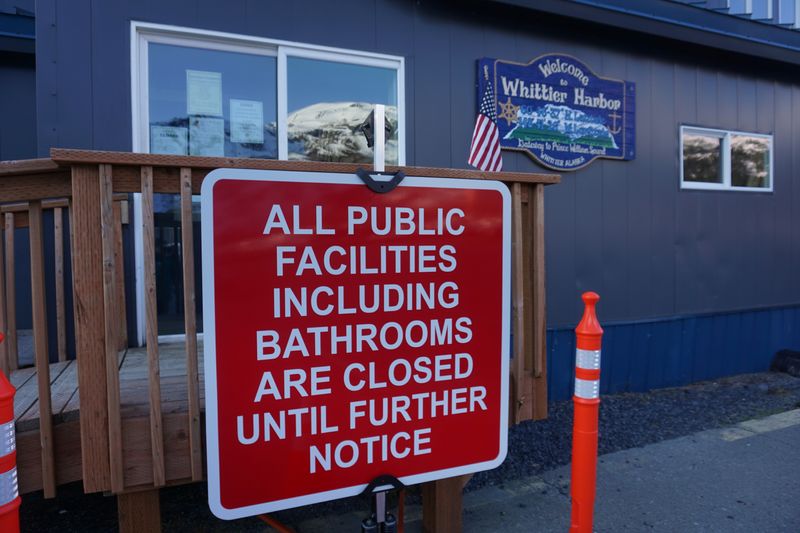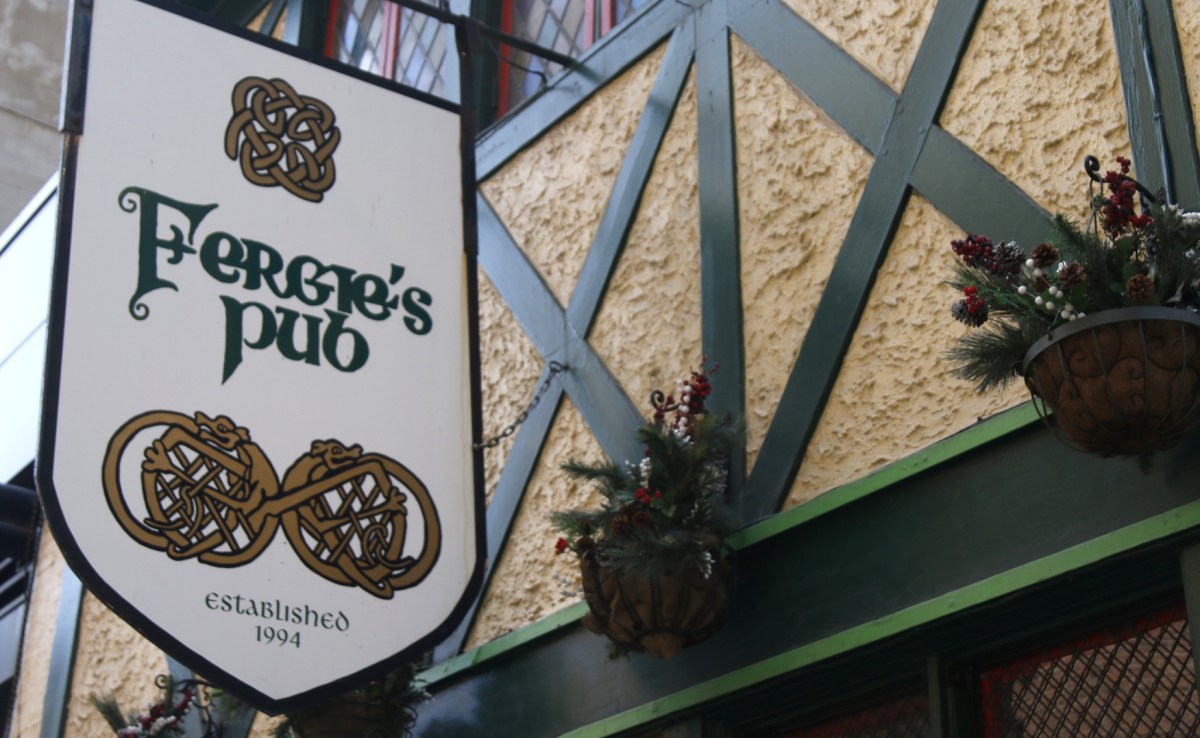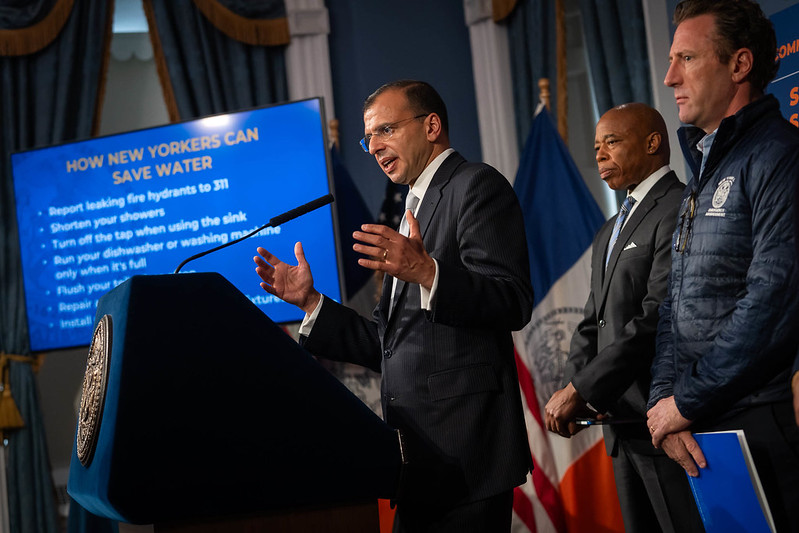CAPE COD, Massachusetts/LONDON (Reuters) – Frozen fish sticks and canned salmon have made a comeback as the coronavirus crisis keeps people home, forcing a change of tack for the fishing industry that usually turns to restaurants from Paris to New York and Shanghai to serve their fresh seafood.
Fishing crews from Alaska in the United States to Zhejiang in China have been battered by lockdowns that have shut fine dining halls and fancy hotels, leaving customers to stock up from supermarkets rather than pick a platter from a table menu.
Manhattan eateries that draw in the Wall Street crowd were a major market for Jake Angelo’s razor clams, a delicacy dug from the mud along the shores of Cope Cod, Massachusetts.
But prices have hit rock bottom and shut down a vital source of income for the fisherman who has a boat named Ripped Tide.
Angelo said the whole seafood industry was on its backside, although he used much saltier language to voice his anxiety.
“People are scared of handling oysters and clams at home. They want the restaurants to do it,” he said. “And as oysters get bigger, there’s not a market, because they’re too hard to handle. But you can’t put them on hold and tell them to stop growing.”
Scientists say the $161 billion global industry’s travails could offer one bright spot: the downturn may give some depleted fish stocks a brief chance to recover, as they did in the World Wars, although at that time fish had years of relief not months.
Yet, for boat owners, seafood firms and others involved in the industry, which produced 178 million tonnes of fish worldwide in 2019, the immediate challenge is to survive until demand returns or to adapt swiftly to cater for new tastes.
“There is no point going out to fish and then not be able to sell,” said Bruno Margolle, president of the French fishing federation FEDOPA and co-owner of a family trawler in Boulogne.
In France and Britain, fleets are trying to stagger landings to avoid flooding the market and fewer boats are going to sea.
But crews that still head out fear their cramped quarters raise the risk of infection if a co-worker carries the virus.
APPEALS FOR HELP
“Our major markets have collapsed and, of course, social distancing is impossible on a fishing vessel,” said Harry Wick, chief executive of the Northern Ireland Fish Producers’ Organisation.
Northern Ireland’s prawn catch is usually a hit in Spain, while its crabs are popular in the world’s No. 1 seafood market, China. But with many eateries around the globe closed or limited to offering a restrictive takeaway service demand has plummeted.
Governments are facing appeals for help. In a May 6 letter, U.S. Senators called for $1 billion in aid for the U.S. fishing industry, saying sales for some communities had plunged 95%.
The U.S. Department of Agriculture placed an order in April for 20 million pounds (9 million kg) of wild-caught, warm-water shrimp, offering relief to Louisiana and Gulf of Mexico shrimpers.
About 80% of U.S. shrimps are sold to restaurants. But demand is now “at 10% to 20% of what they normally would sell,” said C. David Veal, executive director of the American Shrimp Processors Association.
Ningtai Ocean, a firm based in China’s eastern Zhejiang province with 47 fishing vessels, is not only grappling with falling demand but also faces operational challenges for its fleet.
The closure of ports in Peru, over fears about the spreading coronavirus, has hampered its squid fishing in the region, with almost 20 of its boats forced to return home early because they could not dock in Peruvian ports for maintenance.
Most of Ningtai’s catch is processed in China and sold to Europe and the United States, where tumbling demand has driven down prices, a Ningtai manager said, asking not to be named.
Ningtai is now developing products in smaller packaging to be more appealing for families eating at home. It is also working to boost sales in China at community stores and online.
Americans locked down at home have gained a new appreciation for packaged seafood, with volumes surging more than 50%, Nielsen data showed. Battered or breaded fish sticks is a particular favourite, while canned salmon is also proving a hit.
‘JOIN OUR CREW’
Catering for the change in tastes, Seattle-based United States Seafoods LLC advertised for recruits to work on trawlers that stay in the Bering Sea for months to catch Alaskan pollock, used in the frozen fish sticks and McDonald’s fish sandwiches.
“Do you like working in a diverse environment with the opportunity to meet new people? If this is you, United States Seafoods wants you to join our crew to fish in the Bering Sea!” an Indeed.com job post said.
The coronavirus crisis, meanwhile, posed a dilemma for Alaska’s Bristol Bay region, the most productive salmon ecosystem in North America, and its $300 million industry.
Residents feared the influx of people working to catch salmon, which can double the region’s residents to 14,000 once the season get underway in June, might overwhelm medical facilities in an area with just 16 hospital beds.
But instead of cancelling, Alaska’s Republican Governor Mike Dunleavy has imposed safety measures, seeking to balance the risk to residents against damage to a vital local industry.
If salmon numbers are not kept in check, they can deplete oxygen in rivers, causing hypoxia, killing fish and other life.
“Shutting down the fishery is not an option. It would not only be an economic disaster, it would be an environmental disaster,” said Raven Cunningham, a sixth-generation commercial salmon fisherman in Cordova, Alaska.
Some salmon this year may be canned. “People want shelf-stable and good food,” said David Harsila, president of the Bristol Bay Fishermen’s Association. “It’s made a big comeback.”
In neighbouring Canada, the authorities are delaying the start of the spring lobster season, buying time to allow the peak of the coronavirus to pass so vacationers can still make it to eat boiled tails and claws at picnic tables this summer.
In South America, Brazil’s fishing industry is struggling to fly fresh produce to international markets as airlines ground aircraft, adding to woes when local consumption has nosedived.
Sales to restaurants, bars, hotels and industrial kitchens represent 80% of demand in Brazil, leaving the industry “on its knee” after a 50% drop in sales and customer defaults, said Eduardo Lobo, president of fishing association ABIPESCA.
It’s not just crews catching wild fish who are struggling, the aquaculture industry in Chile, the biggest seafood farmer in the Americas, faces tumbling consumption and protests by people who fear the salmon farms, with their steady stream of workers and trucks going in and out, will be vectors for the virus.
Industry group SalmonChile said its members agreed to halve production and arrange shifts so workers kept their distance.
Meanwhile, Chinese customs data showed aquaculture exports in the first quarter fell by 21% to 784,000 tonnes, while the value fell by 18% to 3.83 billion U.S. dollars.
(Additional reporting by Ana Mano in Sao Paulo, Aislinn Laing in Santiago, Gus Trompiz and Sybille de La Hamaide in Paris, Ian Graham in Belfast, Yereth Rosen in Anchorage, Alaska, Khanh Vu in Hanoi, Rajendra Jadhav in Mumbai, Dominique Patton and Hallie Gu in Beijing and Fransiska Nangoy in Jakarta; Editing by Veronica Brown and Edmund Blair)

